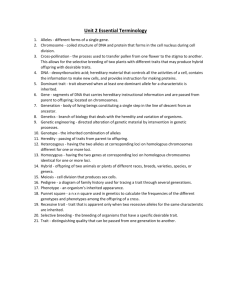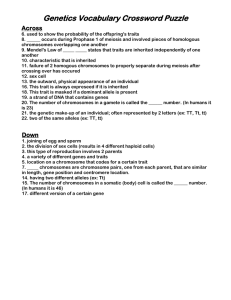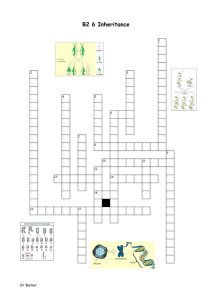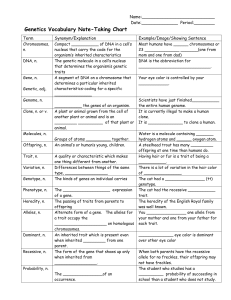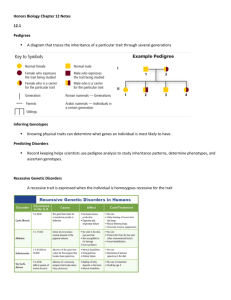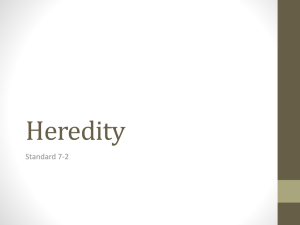red vocabulary - pams
advertisement
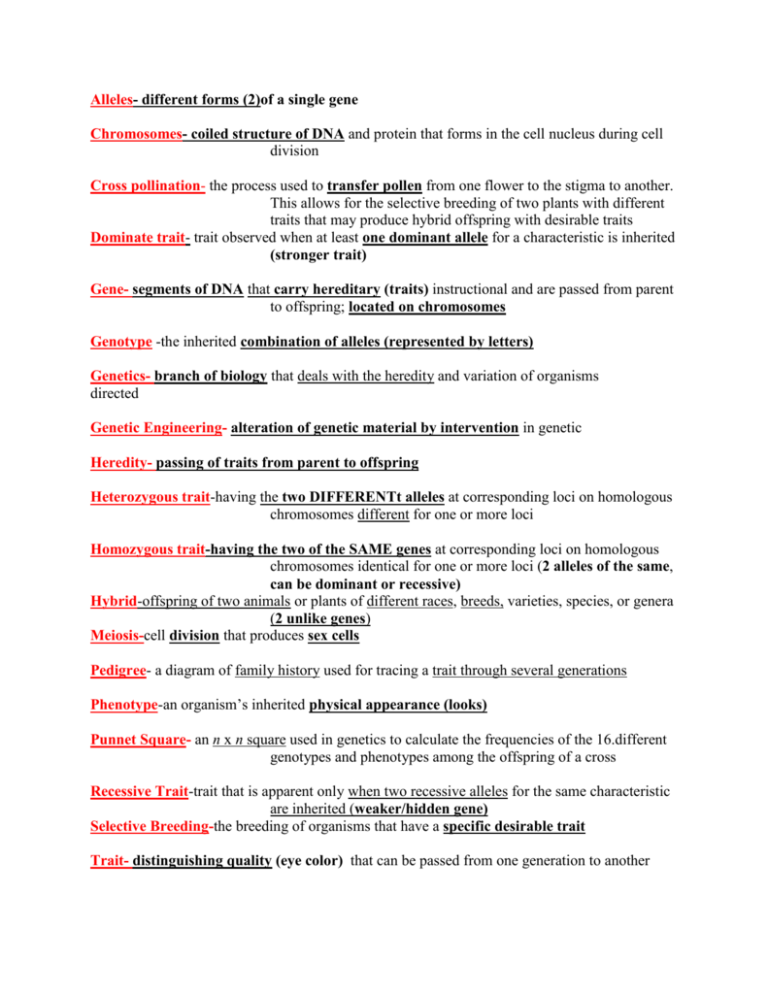
Alleles- different forms (2)of a single gene Chromosomes- coiled structure of DNA and protein that forms in the cell nucleus during cell division Cross pollination- the process used to transfer pollen from one flower to the stigma to another. This allows for the selective breeding of two plants with different traits that may produce hybrid offspring with desirable traits Dominate trait- trait observed when at least one dominant allele for a characteristic is inherited (stronger trait) Gene- segments of DNA that carry hereditary (traits) instructional and are passed from parent to offspring; located on chromosomes Genotype -the inherited combination of alleles (represented by letters) Genetics- branch of biology that deals with the heredity and variation of organisms directed Genetic Engineering- alteration of genetic material by intervention in genetic Heredity- passing of traits from parent to offspring Heterozygous trait-having the two DIFFERENTt alleles at corresponding loci on homologous chromosomes different for one or more loci Homozygous trait-having the two of the SAME genes at corresponding loci on homologous chromosomes identical for one or more loci (2 alleles of the same, can be dominant or recessive) Hybrid-offspring of two animals or plants of different races, breeds, varieties, species, or genera (2 unlike genes) Meiosis-cell division that produces sex cells Pedigree- a diagram of family history used for tracing a trait through several generations Phenotype-an organism’s inherited physical appearance (looks) Punnet Square- an n x n square used in genetics to calculate the frequencies of the 16.different genotypes and phenotypes among the offspring of a cross Recessive Trait-trait that is apparent only when two recessive alleles for the same characteristic are inherited (weaker/hidden gene) Selective Breeding-the breeding of organisms that have a specific desirable trait Trait- distinguishing quality (eye color) that can be passed from one generation to another
